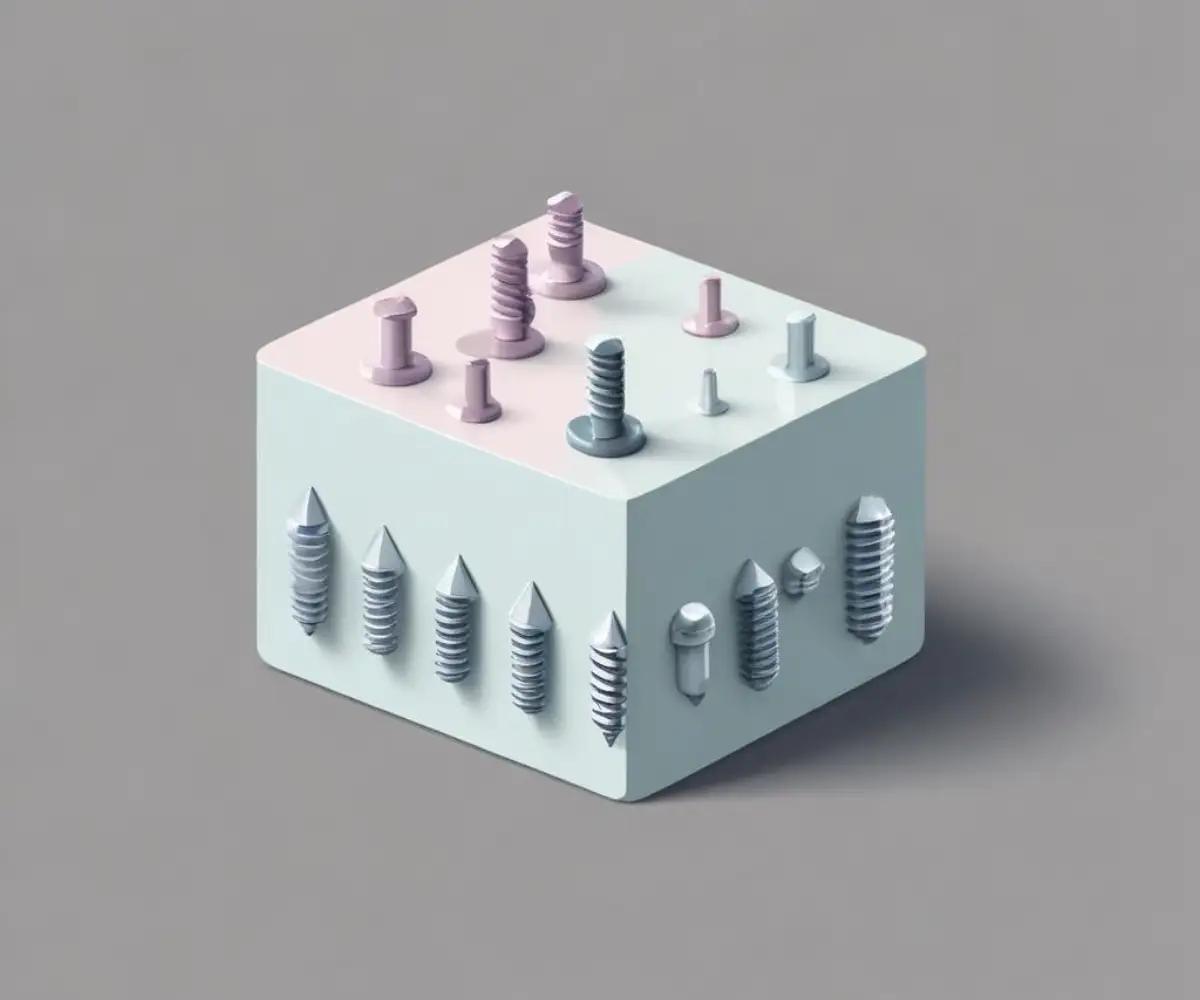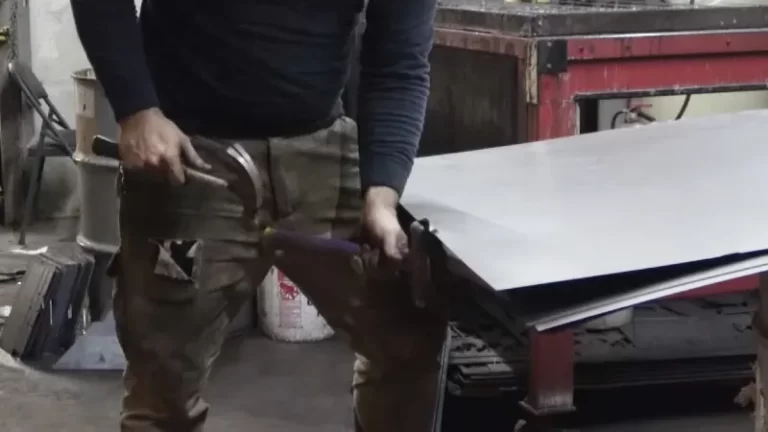Are Screws Magnetic? The Shocking Truth About What Sticks
You’re in the middle of a project, a handful of screws scattered on your workbench. You grab your magnetic screwdriver or parts tray to neatly pick them up, but only some of them stick. It’s a frustrating and common scenario that leaves many people wondering: are screws magnetic, or not?
The answer is more complex than a simple yes or no. Whether a screw is magnetic depends entirely on the metal it’s made from. Understanding this difference is crucial for choosing the right screw for the job, ensuring safety, and preventing project failures.
You'll Learn About
Why the Material of Your Screw is Everything
The magnetic properties of any metal are determined by its atomic structure. Materials that are strongly attracted to magnets are called ferromagnetic. The most common ferromagnetic metals are iron, nickel, and cobalt.
Most standard screws are made of steel, which is an alloy composed primarily of iron. Because of this high iron content, the vast majority of common steel screws are magnetic. However, the world of screws is vast, and many are made from different materials or special types of steel that change their magnetic properties.
The Great Debate: Steel vs. Stainless Steel Screws
The most significant point of confusion arises when comparing standard steel screws to stainless steel screws. While both are iron-based, the addition of other elements fundamentally changes their behavior. This is where the simple answer ends and the science begins.
Standard Steel Screws (Carbon Steel)
Your typical hardware store screws, like drywall or wood screws, are usually made from carbon steel. They are strong and inexpensive, but their high iron content makes them highly magnetic and prone to rust. To combat corrosion, they are often coated with a layer of zinc (known as zinc-plated or galvanized screws).
Stainless Steel Screws: The Plot Twist
Stainless steel is prized for its exceptional corrosion resistance, thanks to a high chromium content. However, not all stainless steel is the same, which directly impacts its magnetism.
There are several “families” of stainless steel, but the most common for fasteners are austenitic and martensitic.
- Austenitic Stainless Steel (e.g., 304 and 316): This is the most widely used type for screws and is generally non-magnetic in its raw, annealed state. The addition of nickel stabilizes the iron atoms into a crystal structure (face-centered cubic) that prevents them from aligning to a magnetic field. Grades like 304 and 316 are popular for outdoor and marine applications where rust prevention is critical.
- Martensitic and Ferritic Stainless Steel (e.g., 410 and 430): These types have a different crystal structure (body-centered) that allows the iron atoms to align. As a result, martensitic and ferritic stainless steel screws are magnetic. They are often used in applications requiring high strength and hardness.
The Cold-Working Effect: A Hidden Magnetic Culprit
Here is a crucial detail that often goes unmentioned: even non-magnetic austenitic stainless steel can become slightly magnetic through a process called cold working. When a screw is manufactured—by rolling threads or forging the head—the metal is deformed under pressure. This stress can cause parts of the non-magnetic crystal structure to transform into a magnetic martensitic structure.
This explains why a supposedly “non-magnetic” 304 stainless steel screw might show a weak attraction to a strong magnet, especially around the head and threads where the most deformation occurred. This partial magnetism is a normal byproduct of manufacturing and does not affect the screw’s excellent corrosion resistance.
Common Screw Materials and Their Magnetic Properties
To simplify things, here is a quick reference guide to the magnetic properties of various screw materials. This can be invaluable when you’re trying to identify a loose screw or choose the right fastener for a new project.
| Screw Material | Magnetic? | Key Characteristics & Common Uses |
|---|---|---|
| Carbon Steel | Yes (Strongly) | High strength, low cost. Used for drywall, wood, and general construction. Prone to rust if uncoated. |
| Zinc-Plated Steel | Yes (Strongly) | Carbon steel with a zinc coating for moderate corrosion resistance. Common for indoor projects. |
| Galvanized Steel | Yes (Strongly) | Carbon steel with a thick zinc coating for better corrosion resistance. Used for outdoor construction. |
| 304/316 Stainless Steel (Austenitic) | No (or very weakly after cold working) | Excellent corrosion resistance. Used in outdoor, marine, and food-grade applications. |
| 410/430 Stainless Steel (Martensitic/Ferritic) | Yes | High hardness and strength but less corrosion resistant than 300-series. Used in machinery and automotive parts. |
| Brass | No | An alloy of copper and zinc. Corrosion-resistant and decorative. Used for finish hardware and boat fittings. |
| Bronze | No | An alloy of copper and tin. Superior corrosion resistance, especially to salt water. Used in marine applications. |
| Aluminum | No | Lightweight and corrosion-resistant. Used in applications where weight is a primary concern, like aerospace and automotive. |
| Titanium | No | Extremely strong, lightweight, and corrosion-resistant. Used in high-performance applications like medical implants and racing. |
The DIYer’s Secret Weapon: Magnetizing Your Screwdriver
Dealing with tiny screws or trying to start one in a hard-to-reach spot can be a nightmare. This is where a magnetic screwdriver becomes indispensable. The good news is you don’t need to buy a special one; you can easily magnetize any standard screwdriver you already own.
A magnetized tip holds the screw securely, allowing for one-handed operation and preventing frustrating drops. Here’s how to do it in under a minute:
- Find a Strong Magnet: A rare-earth magnet (neodymium) works best, but a strong refrigerator magnet can also do the trick.
- Stroke the Screwdriver: Place the magnet at the base of the screwdriver’s metal shaft. Drag it toward the tip in a single, smooth motion. Lift the magnet away at the end of the stroke.
- Repeat the Motion: Repeat this one-way stroking motion 10-20 times. Do not rub the magnet back and forth, as this will randomize the magnetic domains and fail to magnetize the tool.
- Test It: Try to pick up a steel screw with the screwdriver tip. If it holds firmly, your tool is now magnetized. To demagnetize it, you can either tap it sharply against a hard surface or use a dedicated tool demagnetizer.

The Hidden Dangers: When Magnetism Matters Most
While magnetism is a helpful property for handling screws, it can be a critical point of failure in certain specialized fields. Using the wrong type of screw in these environments can lead to equipment malfunction or serious safety hazards.
The most important applications for non-magnetic screws are in electronics and medical equipment. A magnetic screw used near a computer’s sensitive components or in an MRI machine can disrupt delicate magnetic fields, cause data corruption, or even become a dangerous projectile. For these reasons, fasteners made of austenitic stainless steel, titanium, or aluminum are required.
Similarly, magnetic screws can interfere with the accuracy of navigational instruments like compasses on boats and aircraft. In these situations, non-magnetic materials like brass, bronze, or 316 stainless steel are essential for reliable performance.
How to Identify Screws Without a Magnet
What if you don’t have a magnet handy? You can still make an educated guess about a screw’s material based on a few visual cues and context.
- Color and Finish: Standard steel screws often have a dull gray, black phosphate, or shiny zinc coating. Brass is distinctly yellowish, while bronze has a reddish-brown hue. Stainless steel typically has a uniform, bright silver finish that resists scratching.
- Head Markings: High-quality stainless steel bolts and screws sometimes have markings stamped on the head to indicate their grade, such as “A2” (for 304) or “A4” (for 316).
- Application: Consider where the screw came from. If it was used on a boat or outdoor deck, it’s likely stainless steel. If it was holding up drywall, it’s almost certainly carbon steel. When working on a project that involves sensitive materials, like hanging heavy objects on plaster, choosing the right hardware is paramount for safety and success. For more on that, consider reading this guide on how much weight plaster can really hold.
Frequently Asked Questions
Are drywall screws magnetic?
Yes, absolutely. Drywall screws are made from hardened carbon steel and often have a black phosphate coating. Their steel composition makes them strongly magnetic, which is helpful for use with magnetic bit holders on drills.
Are zinc-plated screws magnetic?
Yes. The screw itself is made of carbon steel, which is magnetic. The zinc is just a thin, non-magnetic coating applied for corrosion resistance. The screw’s core material remains strongly magnetic.
Why would you ever need non-magnetic screws?
Non-magnetic screws are critical in applications where magnetic interference could be problematic or dangerous. This includes building or repairing electronics, medical imaging equipment (like MRIs), and sensitive scientific or navigational instruments.
Conclusion: The Final Verdict on Screw Magnetism
So, are screws magnetic? The answer is a definitive “it depends on the material.” As a rule of thumb, if a screw is made of plain steel—even if it’s coated in zinc—it will be magnetic. If it’s made of stainless steel, its magnetism depends on the specific grade and how it was manufactured.
Understanding this distinction is not just a matter of trivia. It empowers you to select the correct fastener for your project, ensuring durability, safety, and proper function. From the convenience of a magnetic tip holding a stubborn screw to the critical necessity of a non-magnetic fastener in a high-tech device, the hidden properties of these humble components are what hold our world together.

